
You need Adobe Reader 7.0 or later in order to read PDF files on this site.
If Adobe Reader is not installed on your computer, click the button below and go to the download site.

|
Feature Articles: Reducing the Environmental Burden of ICT Services
Vol. 13, No. 3, pp. 47–51, Mar. 2015. https://doi.org/10.53829/ntr201503fa8
Development of Equipment for HVDC Power Supply Systems
Hidekazu Hoshi, Hiroya Yajima, Tadatoshi Babasaki,
Keiichi Hirose, Hidenori Matsuo, Masatoshi Noritake,
and Takashi Takeda
Abstract
NTT FACILITIES is conducting research and development focusing on the introduction of high-voltage direct current (HVDC) power supply systems to telecommunication buildings, datacenters, and other such facilities. Future applications involving the direct integration of renewable DC energy sources such as solar panels into smart grids are also in view. This article describes our work on the development, construction, and maintenance of HVDC systems.
Keywords: high-voltage DC power supply system, HVDC rectifier, HVDC PDU
1. Introduction
Servers, data communication equipment, and other information and communication technology (ICT) equipment are in wide use in society and have been supporting substantial economic activity in recent years. ICT equipment is managed centrally in telecommunication buildings and datacenters, and as the use of such equipment spreads throughout society, its importance as a social infrastructure increases. The increasing use is accompanied by an increase in power consumption, however, and consequently, reducing that power consumption has become an issue.
Expectations are high worldwide that high-voltage direct current*1 (HVDC) power supply systems will conserve energy while still providing highly reliable power supplies. The NTT Environment and Energy Systems Laboratories and NTT FACILITIES have been doing basic research on HVDC as well as developing various types of equipment, which are described in the following sections [1].
| *1 |
High-voltage direct current: In the ICT field, –48 VDC supply voltage is used for telecommunications throughout the world. DC voltages in the range from about 300 V to 400 V, on the other hand, are referred to as high-voltage direct current. |
2. HVDC rectifiers
The HVDC rectifier converts the commercial AC (alternating current) power supplied by power companies to 380 VDC [2]. There are 100-kW capable and 500-kW capable rectifiers, and the maximum conversion efficiency is a high 98%. Adopting a redundant configuration makes it possible to continue operation in the event that a failure occurs.
3. HVDC PDU
To counter the problem of arcing*2 when high-voltage direct current is interrupted, we developed a special HVDC power distribution unit (PDU) (Fig. 1).
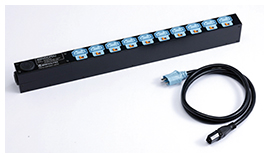
Fig. 1. HVDC PDU.
The PDU has an internal mechanical switch that does not operate when the power plug of an ICT device is inserted into the socket. After insertion, the switch is slid to the ‘on’ position, and the internal contact points are closed, allowing current to flow. The switch is locked in position so that the plug cannot be removed. To remove the plug, the mechanical switch is slid to the ‘off’ position, opening the internal contact points. The arcing is interrupted, and the lock is released so that no arcing occurs outside the mechanism. That makes the plug insertion and removal operations safe for operators and maintenance personnel.
| *2 |
Arcing: A sustained electrical discharge through the air between electrodes that occurs due to the electrical potential across the electrodes |
4. Power conversion equipment for migration
Introducing an HVDC power supply system involves procuring ICT equipment that is compatible with HVDC, as well as HVDC rectifiers and HVDC distribution panels. However, it is assumed that not all of the ICT equipment to be introduced will be HVDC-compatible in the initial transitional migration period. It is therefore necessary to use power converters that accept 380 VDC from the HVDC rectifiers and output 200 VAC, 100 VAC, and –48 VDC for the ICT equipment that operates on those voltages as provided by the previous power supply systems, without changing the general framework of the HVDC power supply system (Fig. 2).
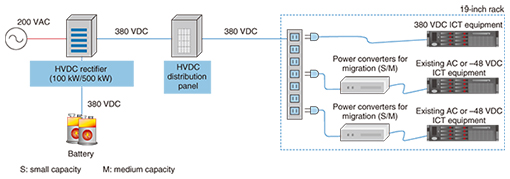
Fig. 2. HVDC power supply system configuration.
We developed two power converters, a small-capacity type (S) and a medium-capacity type (M), to suit the equipment being supplied (Fig. 3). The S type was developed for equipment that consumes power on the level of several hundreds of watts such as monitors or other console systems. The M type was developed for ICT equipment that uses power on the level of several kilowatts.
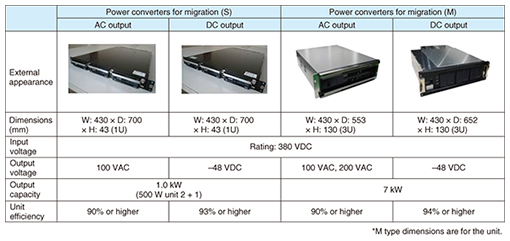
Fig. 3. Lineup of power converters for migration.
5. Future development
We have described here work on introducing HVDC power supply systems to telecommunication buildings, datacenters, and other such facilities. Looking to the future, we will expand our field of view to include the development of HVDC smart grids that operate on renewable energy sources, combining distributed DC power generation by solar panels and other such sources with storage batteries [3]. We are currently involved in field testing in Obihiro City, Hokkaido and in Yamagata City, Yamagata as part of the Technology Development and Verification to Counter Global Warming Project of the Japanese Ministry of the Environment (Fig. 4), and we plan to actively apply the results from that work.
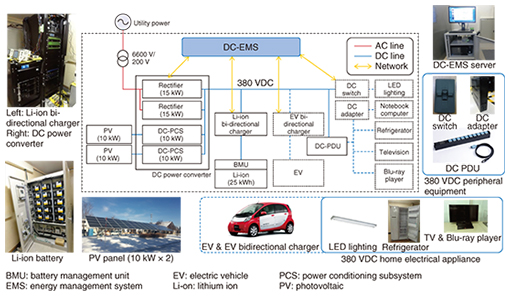
Fig. 4. Ministry of the Environment Field Testing System (Obihiro, Hokkaido).
References
| [1] | K. Asakura, T. Tanaka, and T. Babasaki, “Higher-voltage Direct Current Power-feeding System,” NTT Technical Review, Vol. 9, No. 2, 2011.
https://www.ntt-review.jp/archive/ntttechnical.php?contents=ntr201102fa2.html |
|---|
| [2] |
[2] Y. Udagawa and H. Matsuo, “Power Supply Technology and Air Conditioning Technology for ICT,” NTT Technical Review, Vol. 12, No. 11, 2014.
https://www.ntt-review.jp/archive/ntttechnical.php?contents=ntr201411fa10.html |
|---|
| [3] | K. Hirose, “Trends of DC Power Technologies and their Applications,” IEEJ Transactions on Power and Energy, Vol. 131, No. 4, pp. 358–361, 2011. |
|---|
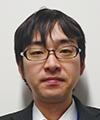 |
- Hidekazu Hoshi
- Assistant Manager, Technical Division, Energy Business Headquarters, NTT FACILITIES, INC.
He received the M.E. in engineering from Utsunomiya University, Tochigi, in 2006 and joined NTT FACILITIES the same year. He is engaged in the development of HVDC systems for central telecom offices and datacenters.
|
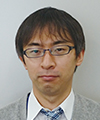 |
- Hiroya Yajima
- Engineer, Technical Division, Energy Business Headquarters, NTT FACILITIES, INC.
He received the B.E. and M.E. in electrical engineering from Utsunomiya University, Tochigi, in 2005 and 2007, respectively. He joined NTT FACILITIES in 2007 and engaged in the development of uninterruptible power supplies. He subsequently joined NTT Energy and Environment Systems Laboratories and is currently researching a DC power supply system for telecommunications.
|
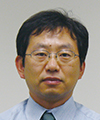 |
- Tadatoshi Babasaki
- Manager, Technical Division, Energy Business Headquarters, NTT FACILITIES, INC.
He received the M.S. and Ph.D. in electronic engineering from Nagasaki University in 1990 and 2011, respectively. He joined NTT Applied Electronics Research Laboratories in 1990. He has mainly been engaged in R&D of DC power feeding systems and batteries for telecommunications systems. He is a member of the Institute of Electrical and Electronics Engineers (IEEE), the Institute of Electronics, Information and Communication Engineers (IEICE), and the Institute of Energy Economics, Japan.
|
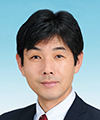 |
- Keiichi Hirose
- Executive Manager, Technical Division, Energy Business Headquarters, NTT FACILITIES, INC.
He received the B.Eng. and M.Eng. in electrical engineering from Yamagata and Niigata Universities, respectively, in 1990 and 1992, and the Ph.D. in electrical engineering and computer science from Nagoya University in 2011. He joined NTT in 1992. He has worked as a research engineer and has more than 18 years of experience in the design, development, and operation of reliable power systems for telecom offices and datacenters. He is currently working with 380 VDC systems for NTT and its customers, as well as researching aspects of smart grids.
He is a member of IEEE, the Institute of Electrical Engineers of Japan (IEEJ), the Institute of Electrical Installation Engineers of Japan (IEIEJ), and IEICE. He is also very active in many standards bodies in areas associated with power systems. He is a member of the IEC (International Electrotechnical Commission) SMB (Strategic Management Board) Study Group 4, a member of the Green Grid Power sub-working group, chair of the IEC SC 22E Japanese NC (National Committee), and a recent past secretary of the IEEJ Investigating R&D Committee into DC power distribution. He was awarded the IEEE PELS (Power Electronics Society) INTELEC 3rd best paper award in 2009, the outstanding paper prize from IEEJ in 2010, the best paper award of IEIEJ in 2013, and the Scientific Award of the Japan Society of Energy and Resources in 2013. He was also awarded the Hoshino Award of IEIEJ in 2014.
|
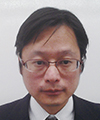 |
- Hidenori Matsuo
- Research engineer, Research and Development Headquarters, NTT FACILITIES, INC.
He received the M.E in human and environmental studies from Kyoto University in 2000 and joined NTT FACILITIES the same year. He worked on the development of HVDC rectifiers that reduce annual power consumption. He is currently studying –48 VDC rectifiers for telecommunication sites. He is a member of IEEJ.
|
 |
- Masatoshi Noritake
- Researcher, Research and Development Headquarters, NTT FACILITIES, INC.
He received the B.E. and M.E. in engineering from Keio University, Tokyo, in 2005 and 2007, respectively. He joined NTT FACILITIES in 2007. He is working on the development of HVDC systems.
|
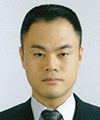 |
- Takashi Takeda
- Group Leader of Power Supply System Group, Research and Development Headquarters, NTT FACILITIES, INC.
He received the B.E in electronic engineering from Tokyo Denki University in 1996. He joined NTT FACILITIES in 1996. He has mainly been engaged in R&D of DC power systems for ICT applications. He is a member of IEEE, IEEJ, and IEIEJ.
|
↑ TOP
|




















